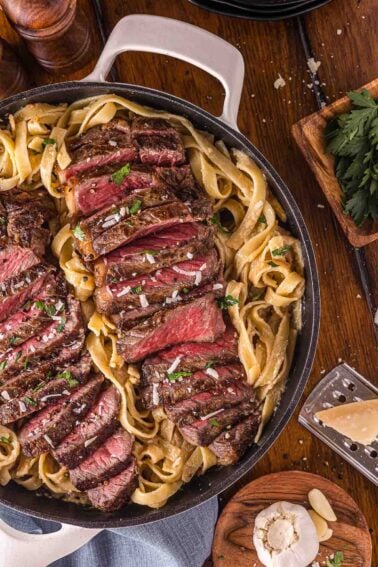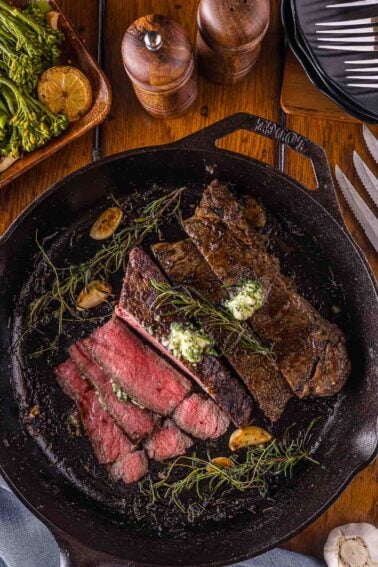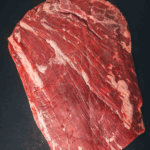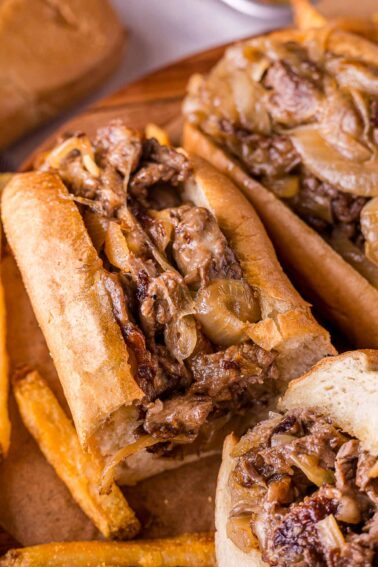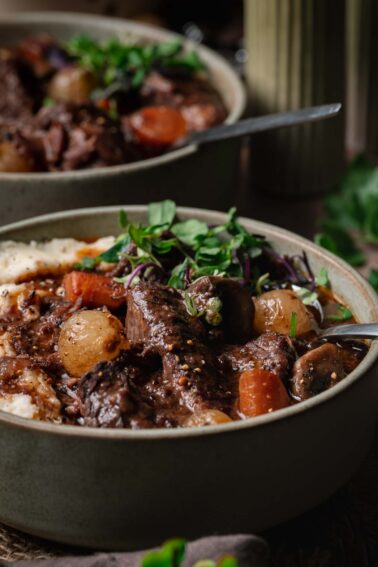Quick Answer
Flank steak is a lean, flavorful cut from the cow’s abdominal area with a distinctive long grain. At $10-12 per pound, this affordable cut becomes incredibly tender when marinated properly and sliced against the grain. Perfect for fajitas, stir-fries, and grilling.
TL;DR
- Best for: Grilling, fajitas, stir fry
- Price: $10–12/lb
- Cook to: 130–135°F (medium rare)
- Tip: Always slice against the grain after resting
- AKA: Jiffy steak, beef flank
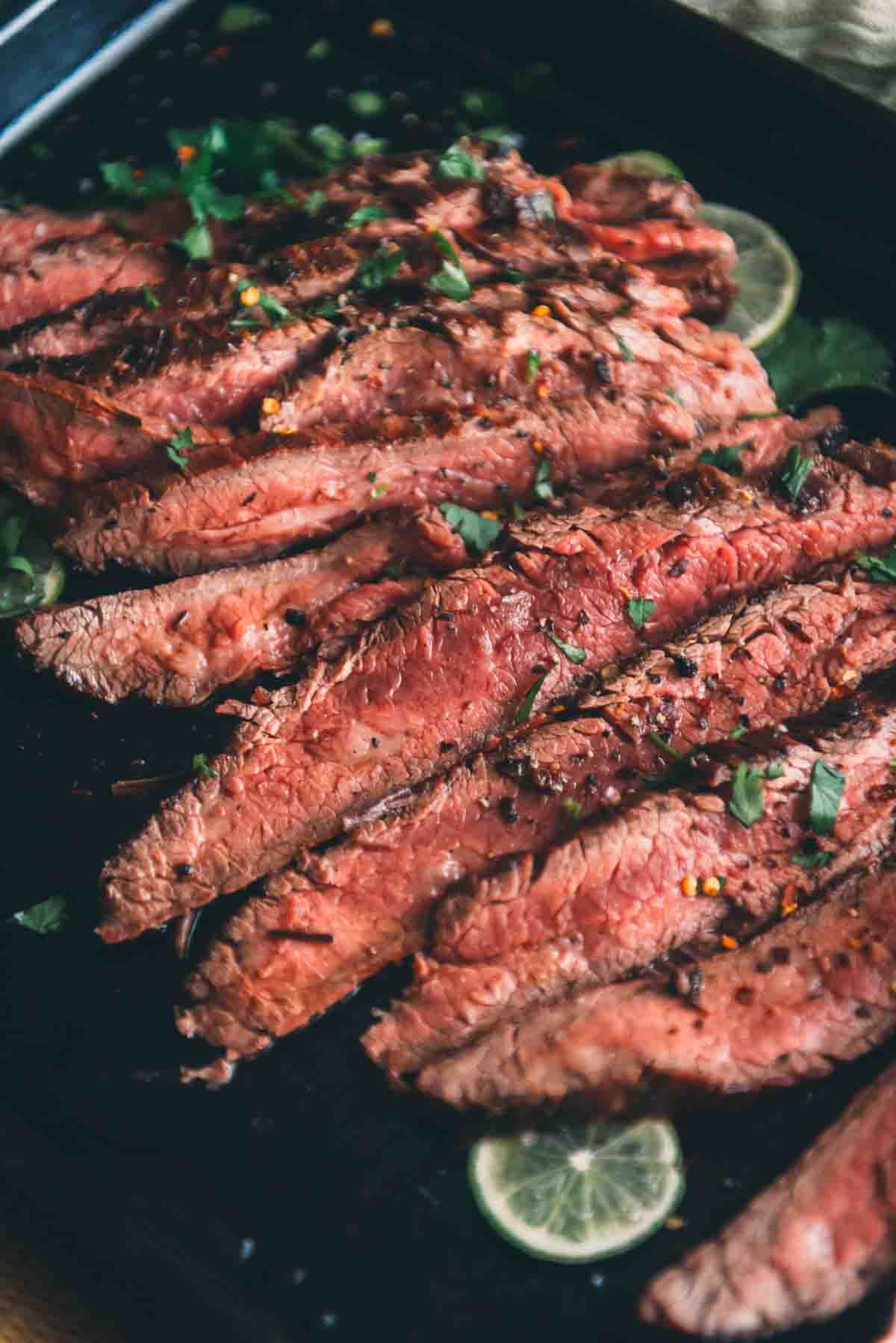
Table of Contents
Looking for an affordable steak that delivers big flavor? Flank steak might look intimidating, but it’s one of the most versatile cuts when you know the techniques. Here’s everything you need to master this budget-friendly favorite.
In this recipe:
What is Flank Steak?
Flank steak comes from the flank primal, located on the cow’s lower abdominal area behind the plate. Since this muscle is well-exercised, the meat develops a distinctive long grain running lengthwise through the cut.
Key characteristics:
- Long, distinctive grain running lengthwise
- Lean with minimal marbling
- Typically 1.5-3 pounds per piece
- $10.99-$12.99 per pound
- Also called jiffy steak or beef flank
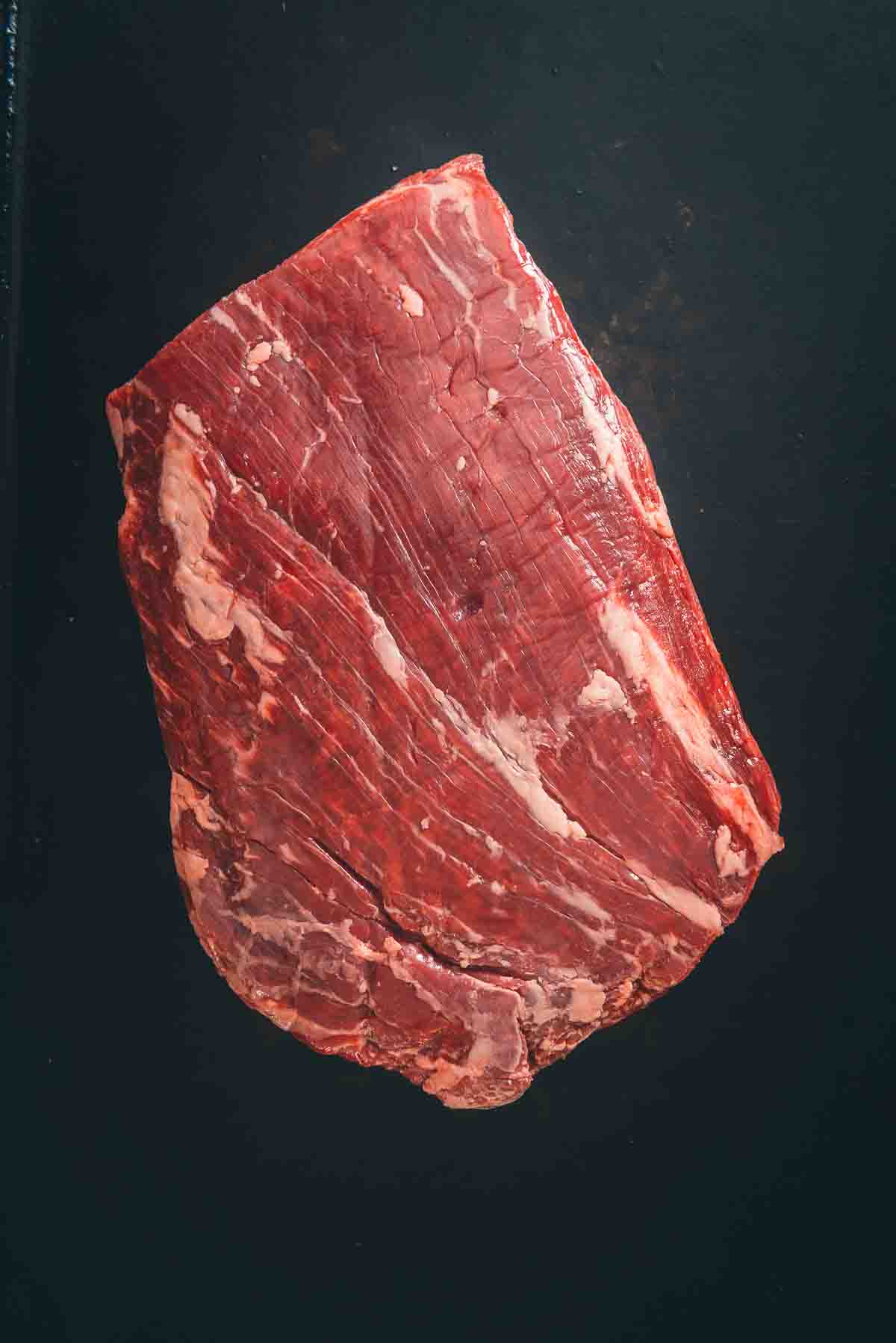
Flank Steak vs Other Popular Cuts
| Cut | Price/lb | Grain | Best Use | Cooking Time |
|---|---|---|---|---|
| Flank | $10-12 | Long | Fajitas, stir-fry | 4-6 min/side |
| Skirt | $12-14 | Loose | Tacos, quick sear | 2-3 min/side |
| Sirloin | $8-10 | Medium | Grilling, roasting | 6-8 min/side |
How to Buy Flank Steak
Look for bright red color, minimal browning, and clear grain lines. Ask your butcher for “flank steak” – it may also be labeled as “jiffy steak” or “beef flank.”
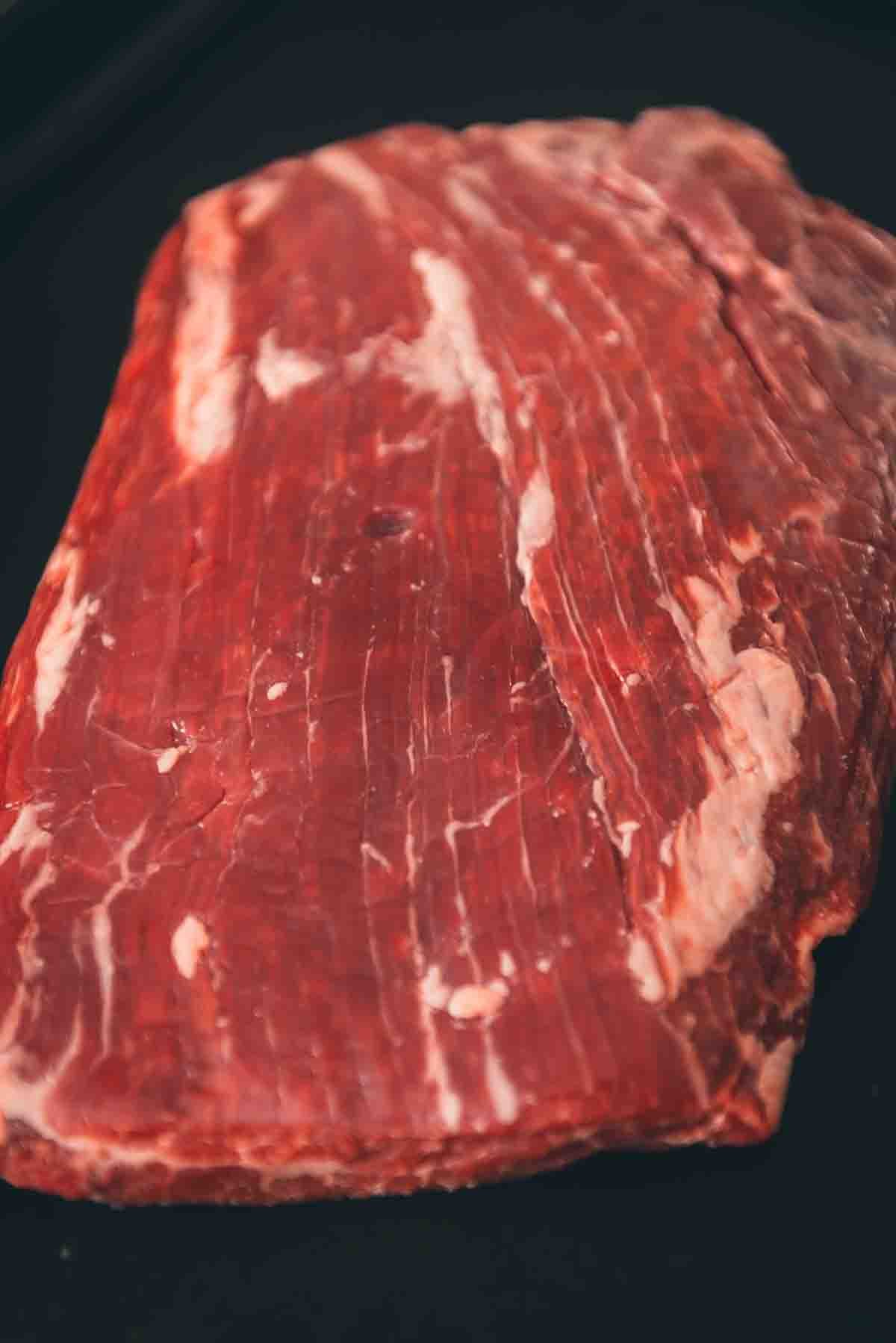
How to Cook Flank Steak Perfectly
The secret to tender flank steak: marinate, use high heat, don’t overcook, and slice correctly.
Essential cooking steps:
- Marinate 2-12 hours with acidic marinades – Acid breaks down tough fibers
- Use high heat – 400°F+ for proper searing
- Cook to medium-rare – 130-135°F internal temperature
- Rest 5-10 minutes – Redistributes juices
- Slice against the grain – Cut perpendicular to muscle fibers in ¼-inch slices
What temp to cook flank steak? Medium-rare (135°F) gives the best texture and flavor for this lean cut.
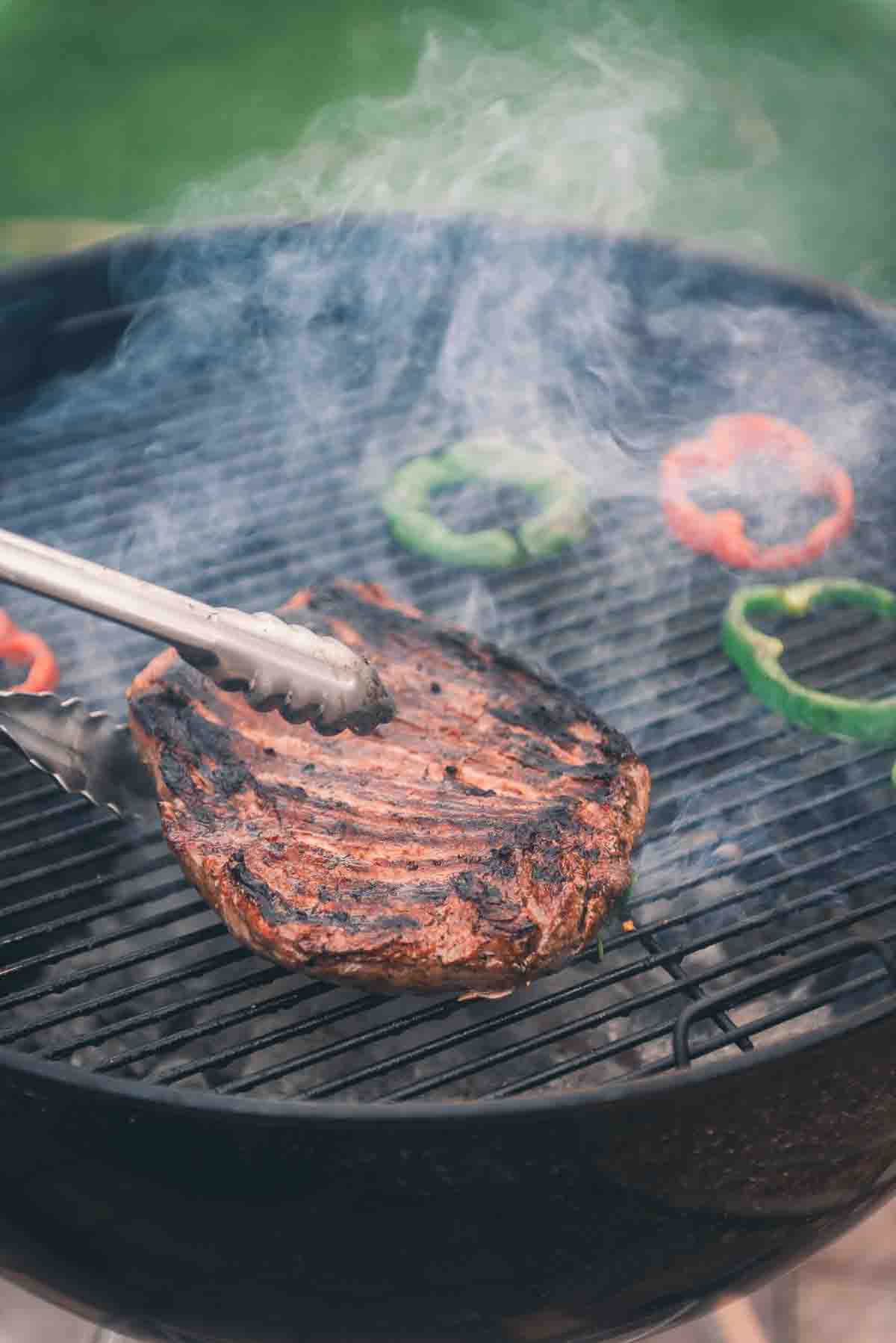
How to Cut Flank Steak
How you cut it makes or breaks flank steak success:
- Locate the long grain lines
- Rotate steak 45 degrees
- Slice against the grain in ¼-inch strips
- This breaks tough fibers into tender bites

The Best Flank Steak Recipes
These tested recipes show flank steak’s versatility from quick weeknight dinners to impressive entertaining dishes:
Start Here – The Basics
- Flank Steak Marinade Recipe – My go-to marinade that tenderizes perfectly and adds incredible flavor – master this first –
- Grilled Flank Steak Recipe – The foundation recipe that delivers tender, juicy results with the perfect char every time
Weeknight Winners
- Flank Steak Fajitas Recipe – Beer-marinated beef with sizzling vegetables, ready in 30 minutes and always a crowd-pleaser –
- Flank Steak Tacos Recipe – Marinated and grilled with peppers and onions, pile into tortillas for an easy family dinner –
- Flank Steak Salad Recipe – Healthy and satisfying, this protein-packed salad is perfect for meal prep
Party-Ready Dishes
- Grilled Flank Steak Pinwheels Recipe – Impressive presentation filled with spinach, cheese, and sun-dried peppers + easier than it looks
- Carne Asada Nachos Recipe – Game day (or camping) favorite with grilled marinated steak over crispy chips and melted cheese
What is Flank Steak Used for?
Perfect for summer grilling and outdoor entertaining & ideal for meal prep and batch cooking. Flank steak excels in dishes requiring thin beef strips:
- Steak fajitas – Classic Tex-Mex favorite
- Beef stir-fries – Quick Asian-inspired meals
- Grilled tacos – Perfect for taco night
- Steak salads – Protein-packed healthy meals
- Sandwiches and wraps – Lunch solutions

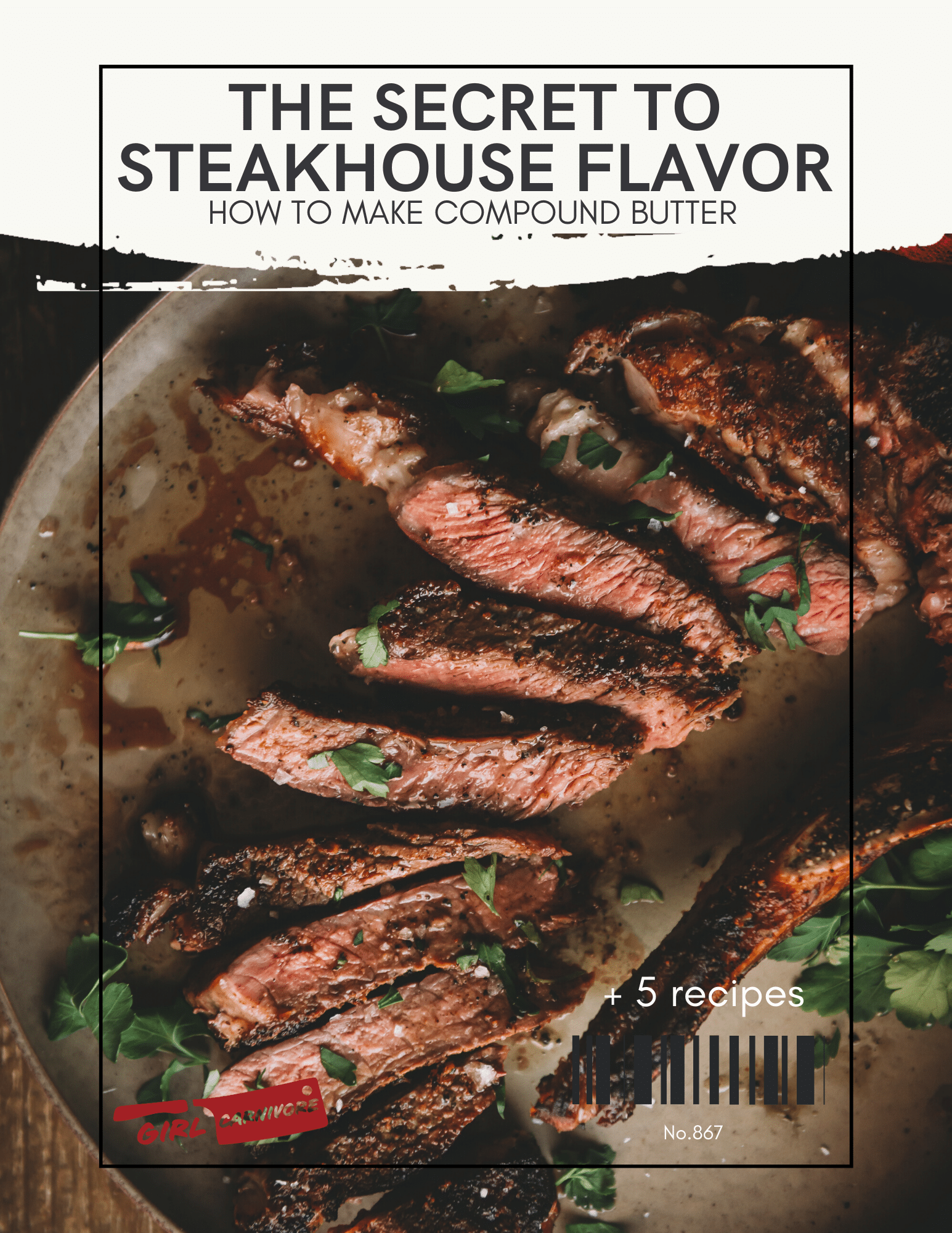
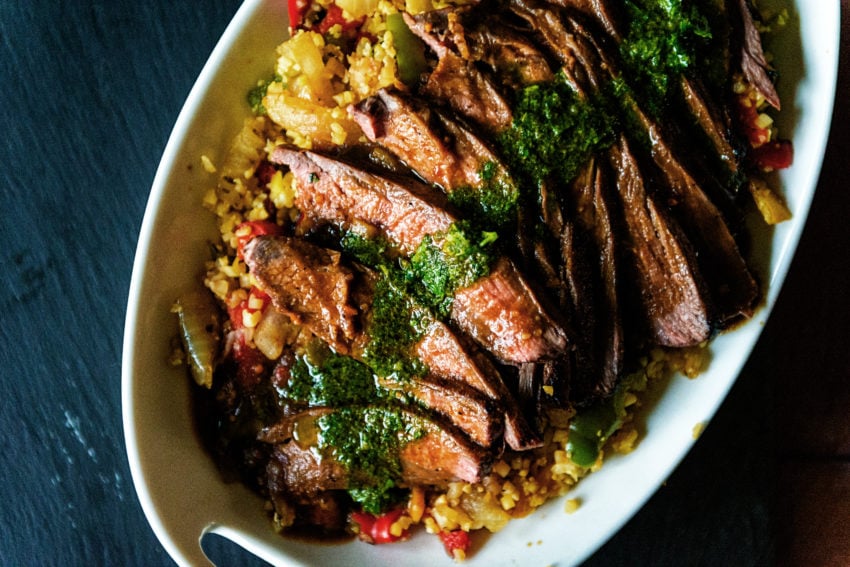
Flank Steak FAQs
Flank is thicker and rectangular; skirt is thinner and longer. Both work for similar dishes.
4-6 minutes per side for medium-rare, depending on thickness. Always use a meat thermometer.
A lean cut from the cow’s abdominal area with long grain, perfect for marinating and quick cooking.
Not required, but marinades tenderize the meat and add flavor. Highly recommended for best results.
Marinate with acid, don’t overcook past medium-rare, and always slice against the grain.
Skirt steak, bavette steak, or merlot steak work as substitutes with similar cooking methods.
Yes! Flank steak is excellent for grilling due to its large surface area and quick cooking time.
Only if overcooked or sliced incorrectly. Marinating, high heat, and proper slicing make it tender and flavorful.
More steak Recipes
Steak Recipes
Steak with Mushroom Cream Sauce
Steak Recipes
Perfect Steak Alfredo
Steak Recipes

